A new aircraft is coming in the WW1 Wings of Glory line: the rocket-armed Nieuport 16, included in the Tripods & Triplanes Starter Set in a version piloted by the French ace Jean Navarre, and as an Airplane Pack, featuring the Ni-16 used by the British ace, Albert Ball.
The Nieuport 16 story includes several facets common to a few great fighters of World War 1. First, like the Albatros fighters, Gustav Delage essentially took a single design (intend to be a racing plane and first seen in combat as the Nieuport 10 2-seater) and refined it model after model, through the Nieuport 27. Second, the Nieuport 11 and 16 story both capture how remarkably fast a real “breakthrough” design could be improved upon, but remain in service for a long time.
The Nieuport 10 was flying for France and the Allies in early 1915 and was considered a delightful flyer but woefully underpowered for a 2-man crew. While some were converted to “fighters” by simply leaving out the observer, the better idea was to reduce the size of the design, thus creating the N-11 “bebe” (baby), which became one of the most important planes of the entire war. (Side note—the “baby” Nieuport reminds us of the Sopwith “Pup,” so named because it looked like an offspring of the Sopwith “Strutter.”) The Nieuport 11 arrived at the front (for both French and British units) in late 1915 and began to be seen in significant numbers in January 1916, where it quickly dominated the skies over Verdun and completely outclassed the Fokker Eindecker. Recognizing new enemy designs would be better, Nieuport began their next phase by recognizing the limitations of the N-11’s 80hp engine.
The Nieuport 16 was basically a N-11 with the airframe strengthened to handle a 110hp engine upgrade. While gaining slightly more speed, the extra weight made the plane nose heavy and difficult to fly. While manufacturing began on the N-16, final tweaks were made to the larger, better-balanced Nieuport 17 (perhaps the best iteration of the entire line). The first N-17s began appearing at the front in March 1916, but the N-11s and N-16s were not withdrawn entirely from combat until 1917. The design greatly impressed the Germans, who both incorporated the “V-strut” sesquiplane design into new models and even built direct copies of the plane for their own use (though both versions of the copies were relegated to 2nd line units or pilot training.)
So, we can see the N-16 is really a “transitional” model, bridging the span from the N-11 (with over 1000 built) to the N-17 (3600 built). A few N-16s even experimented with mounting a Vickers machine gun in front of the pilot, either instead of the over wing Lewis or in addition to it. At least three RFC squadrons were equipped with the N-16, allowing Albert Ball’s introduction to Nieuports. He would fly the N-16 and later the N-17 to great fame and success. Both the N-11 and N-16 were also used extensively in Italy and Russia, plus smaller Allied nations.
Nieuport 16 in Wings of Glory
While many planes used the Le Prieur rockets, our legend/imagination sees them most commonly with the N-11 and N-16, and so they were chosen to face the Martian Tripods. WW1 Wings of Glory N-16 models include “special” cards for using their top-wing machine guns in creative ways, plus other cards that are distinct for specific pilot skills.
The Nieuport 16 included in the Tripods & Triplanes Starter Set is the aircraft piloted by Jean Navarre, the first French pilot to shoot down two enemy aircraft in a single day and the first to be officially declared an ace. Made a Chevalier de la Legion d'Honneur for his secret special missions and his aerial victories, he gained a well-deserved reputation as the 'sentinel of Verdun' during the Franco-German struggle. Generally flying his red painted Nieuport solo for lengthy hours at a spell, he often tracked enemy aircraft from below and behind.
Navarre scored 12 confirmed victories until he was shot down and suffered a head wound, in June 1916. He returned to the front two years later, but never flew another combat mission. He died at the Villacoublay aerodrome on 10 July 1919, at the age of 23 years, when his plane crashed while practicing for a victory parade on the Champs Élysées. To read more about Navarre, click here.
Special cards with Navarre’s model include the advantages of a top wing mounted machine gun against targets above the firing plane, plus cards that depict Navarre’s special abilities. In this case, Navarre may be equipped with the “Sniper” card, that lets the owner have some choice of what damage he inflicts on the enemy, and the “Sneak Attack” card, which means a close-ranged attack from the rear will inflict an extra card worth of damage to the opponent.
The second Nieuport 16, coming separately in an Airplane Pack, is the aircraft used by Albert Ball, probably the first British pilot to receive anything like the adulation which German and French fighter pilots had been receiving from an early stage of the war in the air.
The British maintained a policy of NOT glorifying their fighter pilots, recognizing that this was unfair to those serving in observation planes and artillery spotting (actually the more valuable part of the air war). There were exceptions, as, for example, the immediate award of the Victory Cross for shooting town the first Zeppelins (and reducing the panic which had accompanied them). But for the most part, front line pilots served in relative obscurity.
However, as the war ground on (and the terrible casualties from the Somme were reported) and the British began to see the advantages of distracting the populace with imagery of daring, knight-like warriors fighting in the clouds, relaxing some of their restraints and allowing Ball to become a real hero to British civilians.
Ball was one of those boys attracted to machinery at an early age and, when he wasn’t tinkering with one gadget or another, he was developing crack shooting skills. He joined the army when the war began but was used for training recruits and not sent to the front. Chafing at this safe post, he paid for private flying lessons and then transferring to the RFC, where he ended up in France flying Be2s.
Never considered a great flyer, he first impressed his superiors with his aggressive tactics (being aggressive in a Be2 is not easy!) and was frequently assigned the squadron’s Bristol Scout to fly his own missions – he scored his first victory with this plane. Posted to the all-fighter Number 11 squadron, he quickly achieved 7 victories, flying the Nieuport 16 – scoring two of them using the model featured in the airplane pack, A134, in the same day –July 2, 1916, when he shot down a Roland C.II and an Aviatik C.
Harshly responding to criticism on his flying tactics by a non-flying superior, he was “demoted” back to 2 seaters for a month in 1916 and then returned to Number 11 when the officious officer was transferred.
Ball was something of an oddball, compared to our normal image of heavy drinking and carousing by fighter pilots. He lived apart from the others in a tent or hut, tended a garden, played the violin, drank very little, and tinkered on his engine to improve performance. Very shy, he at first resisted promotion and preferred “lone wolf” missions, a habit he continued even after being named to command Number 56 Squadron, a collection of truly “elite” pilots. The unit was the first to be equipped with the new Se5 fighters, a plane Ball was not impressed with and tinkered with considerably (the Se5a corrected the early problems). Ball would fly unit missions with the Se5 and then fly lone wolf missions with the Nieuport 17 he was allowed to keep.
May 17, 1917, Ball was lost during a large air combat with very poor visibility due to clouds and sunset. No one is certain of his fate, although the Germans credited his loss to Lothar von Richthofen (Manfred’s brother). His crash site was found, and he was buried with full honors by the Germans. After his death, he was awarded the Victoria Cross (which his mates say “he won many times over”) and other high decorations. His official score was 44 victories, many of them scored 2 and 3 at a time during his lone wolf missions. He died two months before his 21st birthday.
Albert Ball’s Nieuport 16 has the same special cards for top wing gun (and this was a favored tactic of his), plus his shooting skills are depicted by the “Sneak Attack” (+1 damage card at close range from behind) and “Perfect Aim,” which puts a +1 to any damage cards above a zero scored on the enemy.
Information sources: History of War, Military Factory, “The Aerodrome, “RAF Museum, HISTORY , "Albert Ball VC", Bowyer, Chaz (Crecy Publications, 2004), "Nieuport Aces of World War 1", Franks, Norman (Osprey Publishing, 2000), Encyclopedia Britannica, Captain Albert Ball, Escadrille N67 -SPA 67 (image on top).

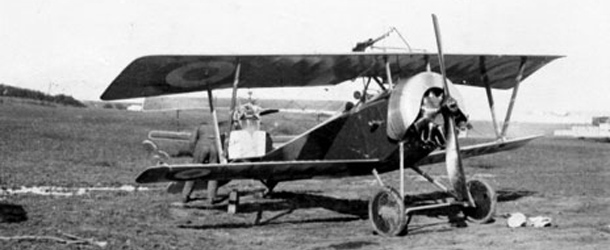
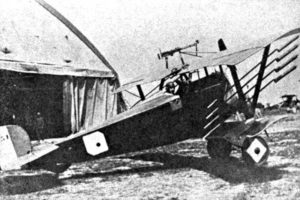
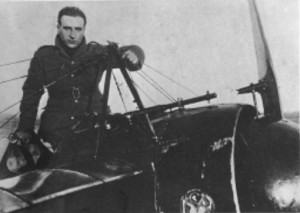
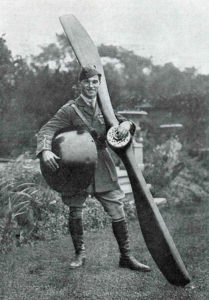
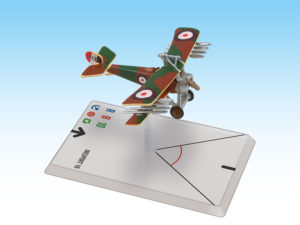
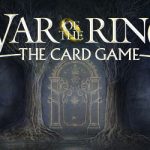
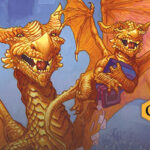






Follow Us on